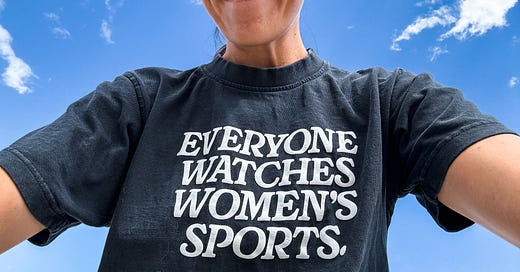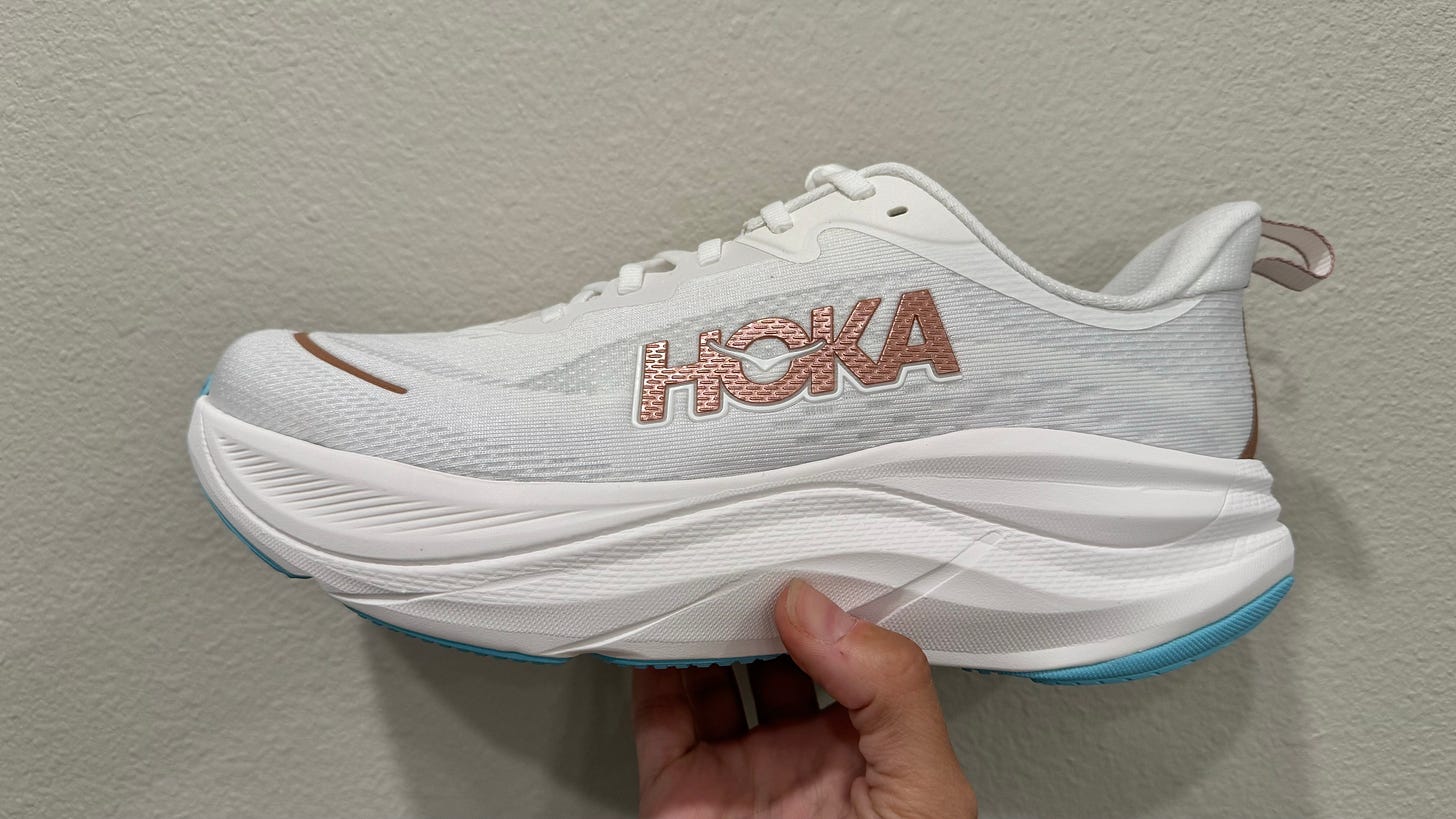Women Were the Real Winners of the Paris Olympics
The 2024 Summer Games were the first in history to include an equal number of male and female athletes.
Women weren’t allowed to compete at the Olympics until 1900. And that year, there were only 22 female athletes out of 997 athletes—just 2.2% of the field. It took 124 years, but at the Paris Summer Games, 50 percent of the competitors were female, the first time the Olympics has had full gender parity.
As a whole, female athletes dominated the 2024 Games, and no team more so than Team USA. American women have won more overall medals than their male counterparts in the last four consecutive Summer Games. This year, Team USA women accounted for 65 percent of the country’s gold medals, and won 24 gold medals, 23 silver, and 19 bronze medals compared to men’s 13 gold, 16 silver, and 23 bronze. If the U.S. women were their own nation, their results at the 2024 Paris Olympics would make them one of the most dominant athletic countries on earth.
Seven women won either four-plus medals or three gold medals at the Olympics. Sprinter Gabby Thomas was the only track athlete to win three gold medals (in the 200m, 4x100m, and 4x400m races); swimmer Torri Huske earned three gold and two silver; gymnast Simone Biles took home three gold and one silver; swimmer Katie Ledecky won two gold, one silver, and one bronze; swimmer Regan Smith earned two gold and three silver; and swimmers Kate Douglass and Gretchen Walsh each took home two gold and two silver.
Meanwhile, Sydney McLaughlin-Levrone won gold in the 400m hurdles and set a world record while at it. Fencer Lee Kiefer, the first American to win an Olympic medal in individual foil in 2021, defended her title. Cyclist Kristen Faulkner ended a 40-year-drought when she won gold in the women’s road race.
It’s not just that Team USA had incredible individual athletes. The U.S. women’s basketball team won their eighth consecutive gold medal, the most consecutive Olympic titles for any nation in basketball, women's or men's (and no basketball player has won more Olympic gold medals than shooting guard Diana Taurasi, who earned her sixth in Paris). The U.S. women’s national soccer team won gold for the first time in 12 years. The U.S. women's rugby sevens won their first Olympic medal ever and netted a $4 million donation from investor Michele Kang. And even though the women's water polo team did not win their fourth consecutive gold medal, they found a new sponsor in Flavor Flav.
We have Title IX to thank for this winning trajectory. This law prohibits discrimination based on sex in education programs, but it’s better known for increasing women’s opportunities in sports and providing more equal access to the same resources male athletes have (places to train and compete, equipment, scholarships, etc.). Title IX was passed in 1972, so the vast majority of the female American athletes competing in Paris have never known a world in which this wasn’t the law. Over those 50 years, female participation in sport has grown significantly—the Aspen Institute's 2023 State of Play report says that girls' participation in sports is at its highest rate since 2013. (That’s not to say there isn’t still inequality and other issues, like a massive sports science gender gap, but it’s something.)
All that’s led to a massive movement—not a moment—behind women’s sports in the past few years. Just to rehash a few stats:
The 2024 women’s basketball national championship was the most watched basketball game—men’s, women’s, pro, college—since 2019, with an average of 18.9 million viewers.
A $240 million, four-year TV deal recently went into effect for the National Women’s Soccer League, and they saw a 95% increase in total viewership.
The Professional Women's Hockey League launched in 2023 and experienced a 2,557% increase in YouTube subscribers over their first season.
The women's gymnastics team final averaged 12.7 million viewers across NBC and Peacock, making the event one of the network's top weekday daytime events in Olympic history.
And women aren’t just winning on the court or the field or in the pool. The Olympic Broadcasting Services increased female broadcasting roles by 80 percent compared to the Tokyo Games. Fifty percent of the senior staff running the Operations Center in the International Broadcast Centre were female. And two-thirds of the 42 OBS Broadcast Venue Manager positions were occupied by women. The International Olympic Committee said, “The number of women in the venue production teams will also be increased, with an emphasis on roles that produce images, with the hopes that this will lead to more equal portrayal between male and female athletes at the Games.”
And that’s crucial, because the Olympics draw insane viewership numbers. This isn’t final, but NBCUniversal posted a 16-day total audience delivery average of 31.3 million viewers across the combined live Paris Prime (2-5 p.m. ET) and U.S. prime time (8-11 p.m. ET/PT). That’s a huge increase from the Tokyo Olympics, which averaged 15.6 million viewers per night in 2021 across NBC’s various television and digital platforms.
It matters that women are showing up and talking about their mental health (Simone Biles mentioned talking to her therapist multiple times in post-competition interviews). It matters when female athletes preach body positivity on a global stage (just watch rugby star Ilona Maher’s clapback at a commenter on TikTok). It matters that they’re giving their best while championing their competition, too (see: Simone Biles and Jordan Chiles bowing down to Brazilian Rebecca Andrade, who won the floor exercise competition).
Yes, giving female athletes more visibility in sports is important to inspire the next generation—but it also proves that everyone watches women’s sports. The amount of media around women’s sports drives interest, which creates the fandom, and that leads to buy-in from sponsors. And sponsorship is the linchpin, because that’s where the money is, whether that’s advertising dollars on a media platform, a prize purse for a race, or better merch. Right now, men earn, on average, 21 times more playing salary than women athletes, a 2023 report found, and 90% of sponsorship dollars go toward male players.
An Olympic year like this, with standout female athletes commanding not just their competition field but headlines and social media, goes a long way in helping to close that gender gap. It’s not a moment, it’s a movement—and one that will hopefully continue long after the Closing Ceremony.
I want to share a few more stories that I’m very proud of that were published the last few weeks (amidst all the Olympics craziness!):
What Do Your Running Clothes Say About You? These Brands Bet a Whole Lot.
At the Olympics, Alexis Ohanian Is Putting His Money Where His Mouth Is for Women’s Sports
the rundown
Hoka Skyflow
Last month, Hoka introduced a new model to its line-up of daily trainers: the Skyflow. It’s lighter than the Bondi and Clifton but more cushioned than the Mach, and it was inspired by the Skyward X—the extremely maximalist, carbon-plated super trainer launched this spring. I liked the slightly softer cushioning (a supercritical EVA foam) that still allowed for some good pop at faster paces, and the whole package was extremely comfortable (the plush upper is similar to that of the Mach X). To be totally honest, I personally prefer other brands’ non-plated daily trainers (I like Hoka’s plated trainers better), but I think Hoka devotees looking for an alternative to the uber-popular options will be happy with the Skyflow.
How Women’s Sports Uniforms Became One Of The Biggest Controversies At The 2024 Paris Olympics
I know, the Olympics are over, but after seeing those Nike Team USA uniforms in action, who wouldn’t want a deep dive into the outrage behind them?! This Women’s Health article by Erin Strout highlights the history around what a uniform says about women’s place in elite sports. Is it a representation of patriarchal forces, as Lauren Fleshman, or an example of how feminism is rooted in freedom of choice? As Strout outlines how uniforms have evolved since women started competing in track and field in the 1920s, it’s clear that the answer is probably somewhere in between.
Better Faster Farther by Maggie Mertens
If you’re riding that Olympic high and want to learn more about the history of women’s running, Maggie Merten’s Better Faster Farther: Better Faster Farther: How Running Changed Everything We Know About Women is a great place to start. While there’s been a lot published recently on the gender gap in sports science, this book leans away from the research and really delves into how and why women struggled to become a part of competitive running. I especially liked the last two chapters, one of which covered differences in sex development and abnormal testosterone levels (an extremely timely topic given the controversy around Algerian Imane Khelif, who won gold in Paris), and the second of which covered female ultrarunners, centered around Jasmin Paris (and touched on whether women can actually outrun men at certain distances).
A Single Dose of Beetroot Juice Improves Exercise Capacity
Beetroot juice tastes like taking a shot of dirt, but you can’t deny its cardio effects. A July 2024 study published in the journal Healthcare found that consuming 2.3 ounces of beetroot juice two and half hours before a 30-minute submaximal cycling test increased exercise load, decreased diastolic blood pressure, decreased mean arterial pressure, and increased flow mediated dilation. Translation: It’s an effective strategy to improve cardiovascular function. (I wrote about the benefits of taking beet juice shots before a race for Runner’s World, and I really gotta get back on that.)
Why The Olympics Almost Banned This Shoe
A friend sent me this YouTube video from Cleo Abrams, and I was originally hooked by the Alphafly intrigue—she cuts it in half and breaks down how the science behind it led to the biggest drop in marathon times in 50 years—but ended up learning more about other gear that constitutes “tech doping.” Runners are understandably focused on super shoes, but gear that makes athletes too good is also prevalent in sports like shooting and swimming (Michael Phelps’ swimsuit from Beijing ended up getting banned because it gave him such an advantage). And with the Paralympics on deck, there was an interesting bit in here about the rules around prosthetics and how natural variances in anatomy affect performance (to use Michael Phelps as an example again, that wingspan is unmatched).







The Cleo Abrams video used Kofuzi footage without asking permission…she’s dead to me now.